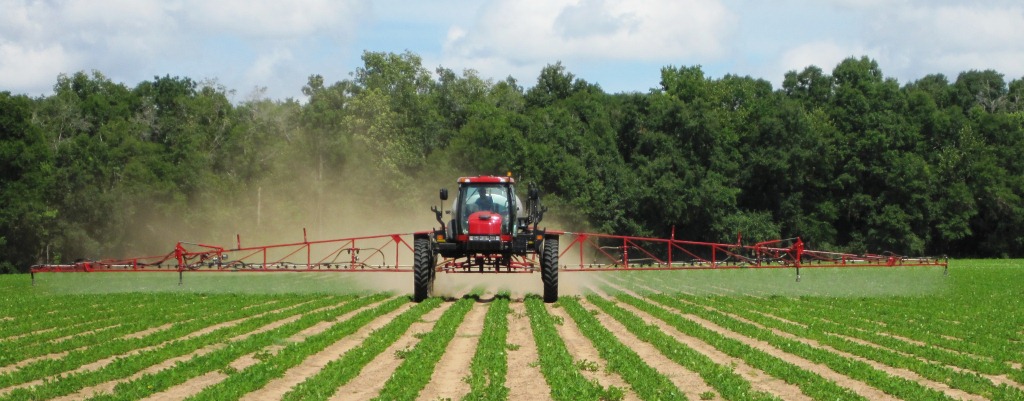- If you can, keep your nozzles as close to the target as possible while still producing a uniform distribution of spray on the target. This doesn’t cost any money as long as it is practical to make it happen.
- When you’re ready to change nozzles, consider selecting nozzles that produce much fewer of the extremely small droplets that are most likely to drift away. Low-drift nozzles are in the market and do a tremendous job of eliminating extremely small, drift-prone droplets from the droplet spectrum.
- There are chemicals sold in the market that are designed to increase the droplet size, and reduce the number of very small droplets when added into the spray mixture. Most of them are some sort of polymer that tends to increase the viscosity and density of the spray mixture which leads to larger droplets. This, however, should be the last defense against drift. First consider the other option such as better targeting of the spray and switching to low-drift nozzles.
- Use shields that cover partially or fully the distance between the target and the nozzles. There are companies manufacturing and selling such attachments to the boom. Shields prevent small droplets from moving away from the immediate application area. This, however may not be practical for sprayers with extremely large booms.
- If there is any doubts about a spraying job that might result in drift, wait until there is no longer that element of doubt. Always pay attention to wind direction and magnitude. The best investment you can make is to buy a wind meter that tells you how high the wind velocity is at any given time. Having a wind meter handy will help you avoid a costly problem associated with spray drift.
Source: C.O.R.N Newsletter
More detailed discussion on these tips and other drift reduction strategies are outlined in following fact sheets:
OSU Effect of Major Variables on Drift Distances of Spray Droplets
OSU New Nozzles for Spray Drift Reduction
OSU Effectiveness of Turbodrop® and Turbo Teejet® Nozzles in Drift Reduction
Latest posts by Doug Mayo (see all)
- Northwest Florida Beef Cattle Conference & Trade Show – February 11 - December 19, 2025
- Friday Feature:The Sears Catalog –How Rural America Shopped before the Internet - December 19, 2025
- November 2025 Weather Summary & Winter Outlook - December 5, 2025

